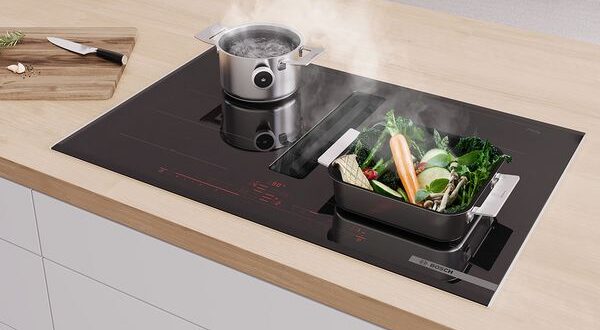Introduction: Why Integrated Ventilation is a Game-Changer for Your Kitchen
Let’s face it, cooking can be a messy business. Between sizzling pans, simmering sauces, and the occasional burnt offering, our kitchens often become a battleground of odors, grease, and humidity. And while opening a window might offer a temporary reprieve, it’s hardly a sustainable or effective solution. That’s where integrated kitchen ventilation systems come in, offering a sophisticated and efficient way to maintain a clean, healthy, and enjoyable cooking environment.
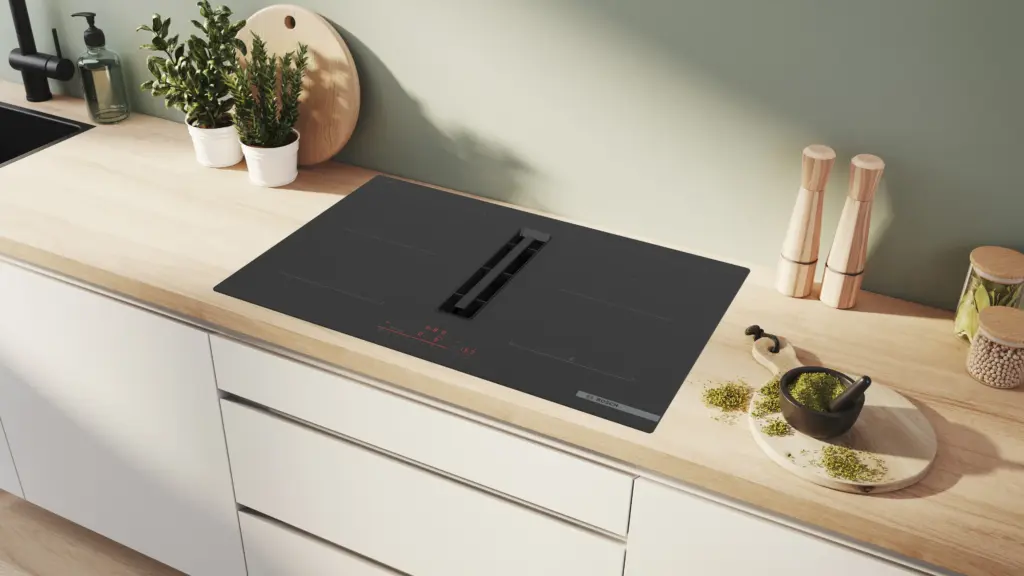
This isn’t just about getting rid of cooking smells; it’s about creating a healthier home, protecting your investment, and enhancing your overall cooking experience. Imagine a kitchen where you can experiment with bold flavors without worrying about lingering odors, where your cabinetry remains grease-free, and where your air is consistently fresh and clean. That’s the promise of integrated ventilation.
In this comprehensive guide, we’ll delve into the world of integrated kitchen ventilation, exploring the different types of systems available, their benefits, how to choose the right one for your needs, and tips for installation and maintenance. Get ready to transform your kitchen into a haven of culinary creativity!
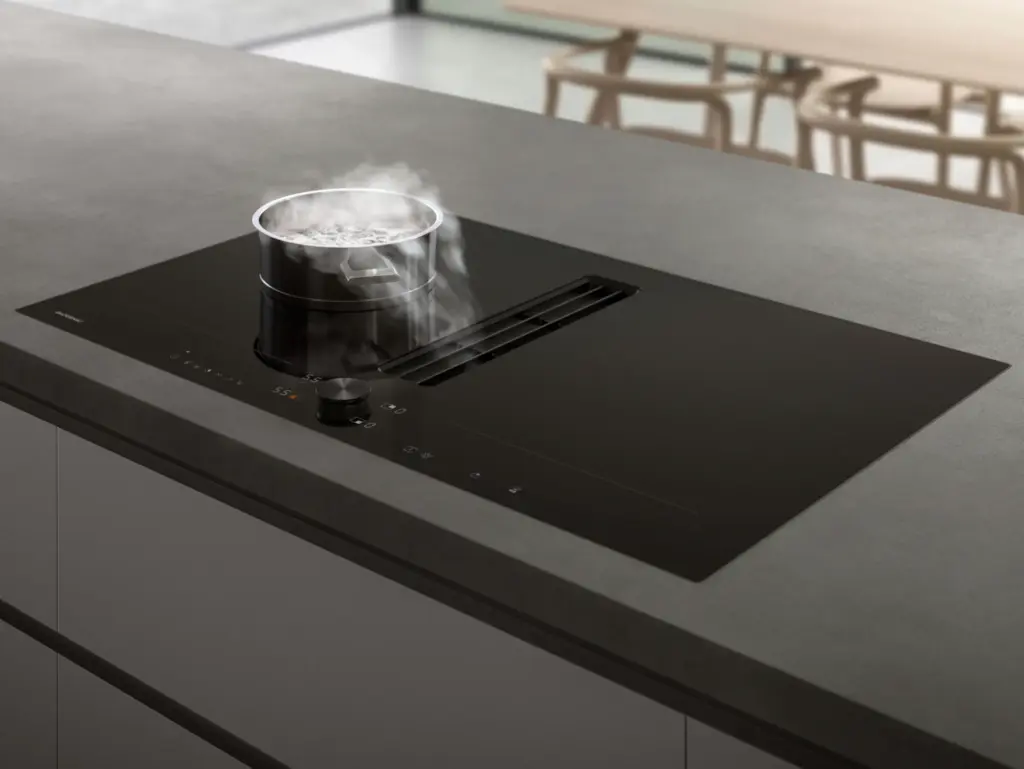
Understanding the Basics of Kitchen Ventilation
Before we dive into the specifics of integrated systems, let’s establish a foundation of understanding regarding kitchen ventilation in general. The primary purpose of any kitchen ventilation system is to remove airborne pollutants, including:
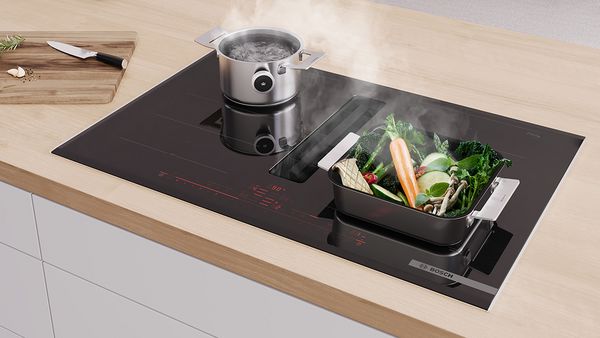
- Smoke: Generated from cooking, especially frying and grilling.
- Grease: Released into the air during cooking, settling on surfaces and contributing to unpleasant odors.
- Odors: From various ingredients and cooking processes, ranging from pungent spices to burnt food.
- Heat: A byproduct of cooking that can make the kitchen uncomfortable.
- Moisture: Produced during boiling and simmering, contributing to humidity and potential mold growth.
- Carbon Monoxide: A dangerous gas produced by gas stoves if not properly ventilated.
Without proper ventilation, these pollutants can negatively impact your health, damage your kitchen surfaces, and create an unpleasant living environment. Think about it: that lingering fish smell after a seafood dinner, the sticky residue on your cabinets, or the stuffy air that makes you feel uncomfortable while cooking. These are all signs of inadequate ventilation.
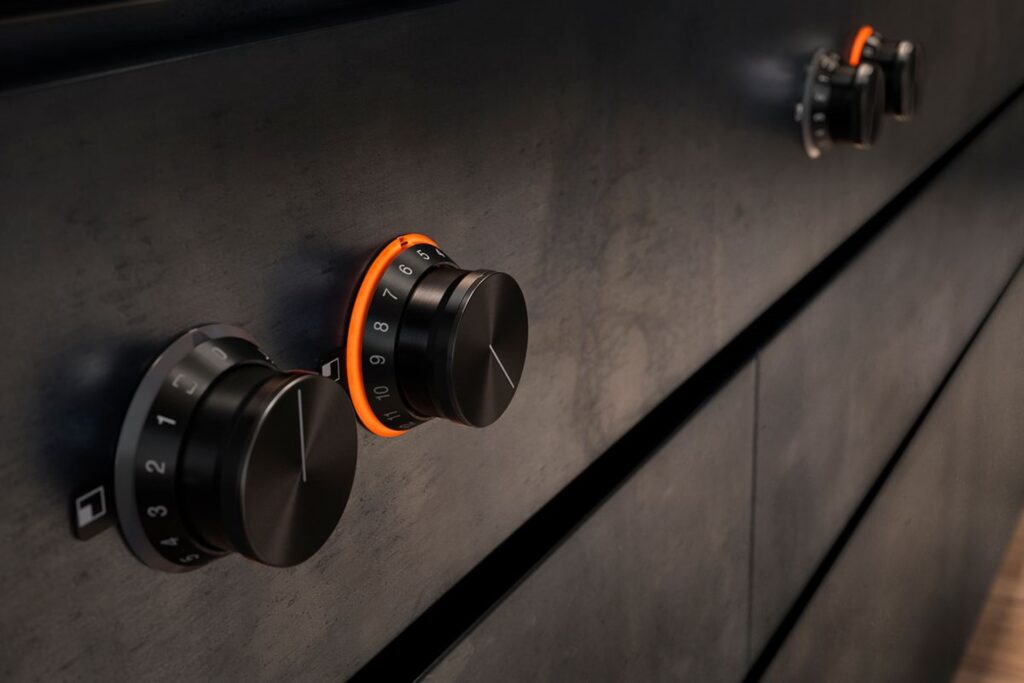
The Difference Between Ducted and Ductless Ventilation
A key distinction in kitchen ventilation is between ducted and ductless systems:
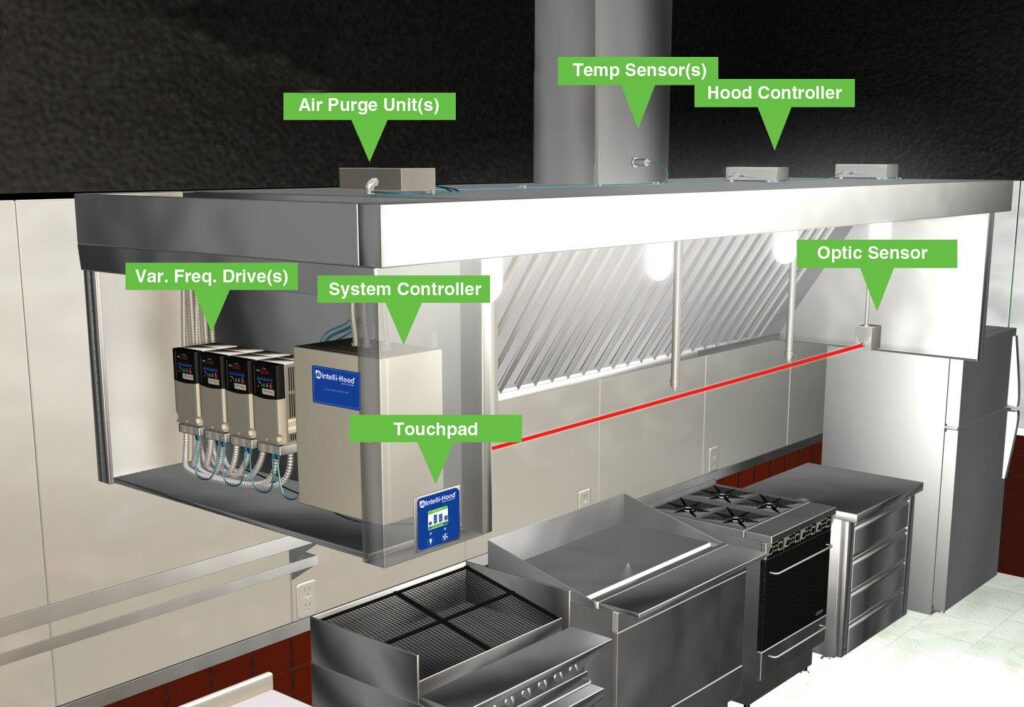
- Ducted Ventilation: These systems vent air outside the home through a ductwork system. They are generally considered more effective at removing pollutants as they physically remove the contaminated air. They require installation of ductwork leading to an exterior wall or roof.
- Ductless Ventilation: These systems filter the air and recirculate it back into the kitchen. They use charcoal filters to remove odors and grease, but they don’t remove moisture or heat. Ductless systems are easier to install and are often used in apartments or homes where ductwork is not feasible. However, they are generally less effective than ducted systems and require regular filter replacement.
When considering integrated ventilation, most high-performance systems are ducted, ensuring effective removal of pollutants. While ductless options exist, they typically offer limited performance and are not the primary focus of this guide.
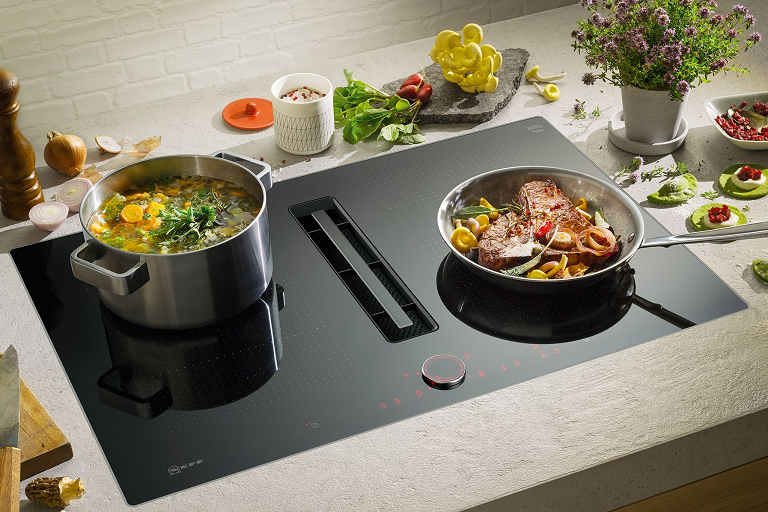
Exploring the World of Integrated Kitchen Ventilation Systems
Now, let’s delve into the exciting realm of integrated kitchen ventilation. These systems are designed to seamlessly blend into your kitchen design while providing powerful and efficient ventilation. They go beyond the traditional range hood, offering innovative solutions that address specific needs and aesthetic preferences.
Downdraft Ventilation: Sleek and Discreet
Downdraft ventilation systems are installed directly behind or beside the cooktop and pull air downwards, capturing smoke and odors at the source. They rise from the countertop when needed and retract when not in use, offering a clean and minimalist look. Downdraft systems are particularly well-suited for island cooktops or kitchens where a traditional range hood would obstruct the view.
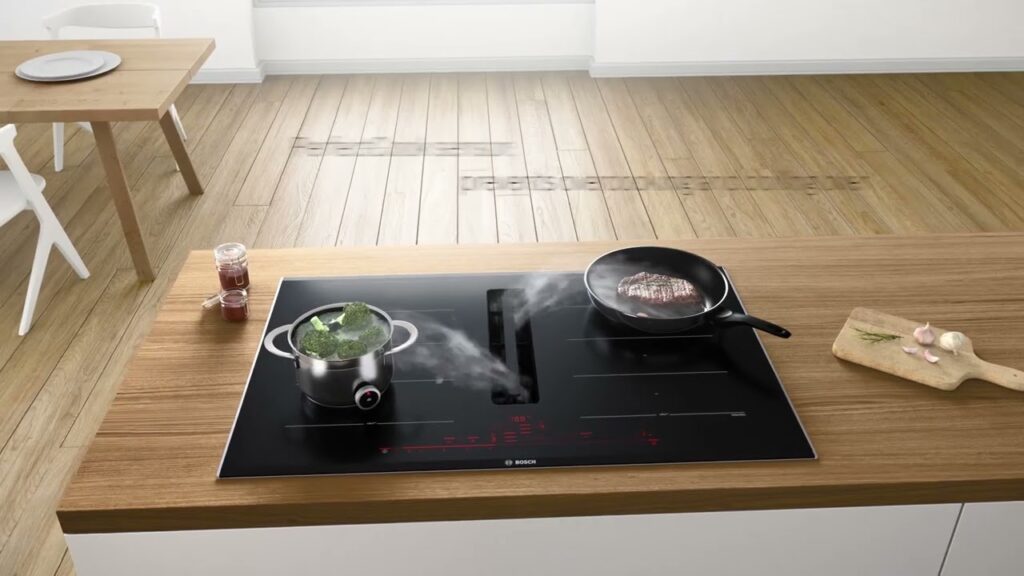
Benefits of Downdraft Ventilation:
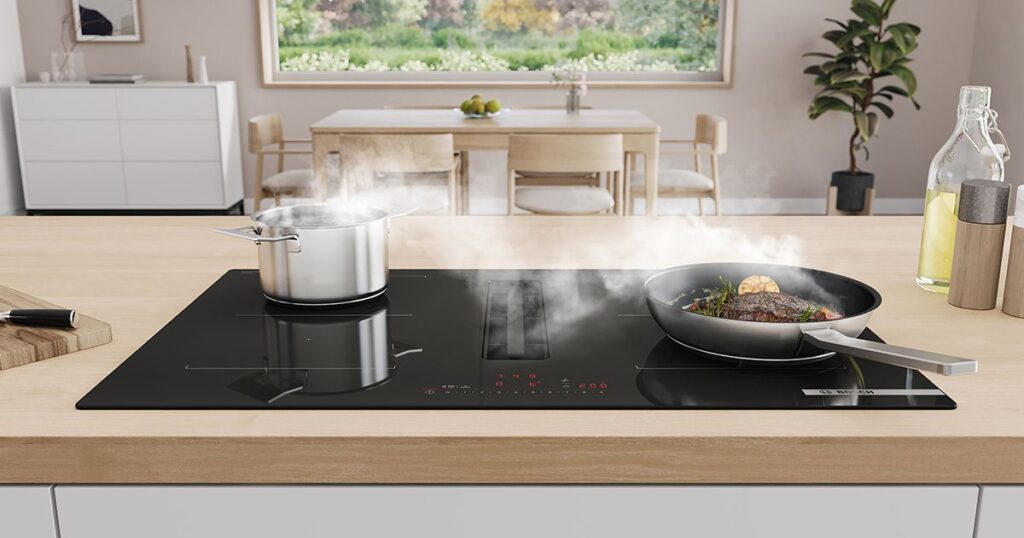
- Sleek Design: Offers a clean and unobstructed view, perfect for modern kitchens.
- Space-Saving: Retracts when not in use, maximizing countertop space.
- Ideal for Island Cooktops: Provides ventilation without a bulky overhead hood.
Considerations for Downdraft Ventilation:
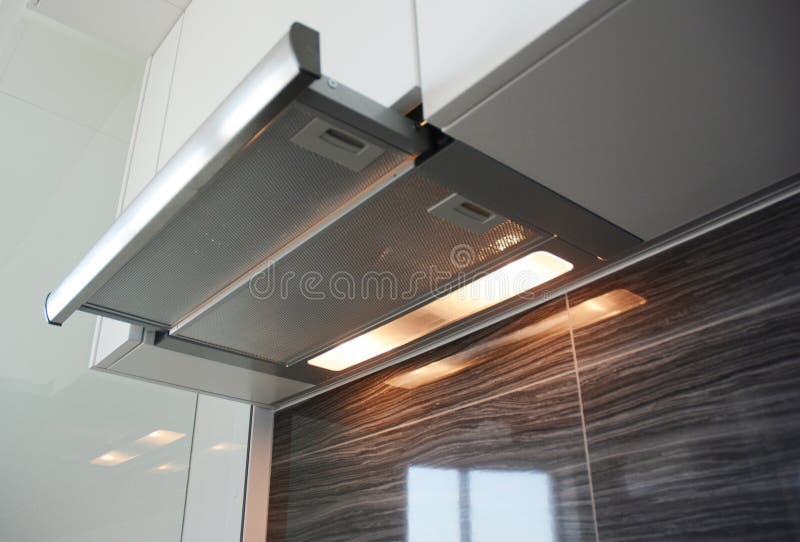
- Effectiveness: May be less effective than overhead range hoods, especially for tall pots or vigorous cooking.
- Installation: Requires careful planning and potentially more complex ductwork.
- Cost: Can be more expensive than traditional range hoods.
Integrated Range Hoods: Blending Performance with Aesthetics
Integrated range hoods are designed to be concealed within cabinetry, providing a seamless and unobtrusive look. They are typically installed above the cooktop, just like traditional range hoods, but are hidden behind a cabinet door or custom panel. This allows you to maintain a consistent aesthetic throughout your kitchen while still enjoying the benefits of powerful ventilation.
Benefits of Integrated Range Hoods:
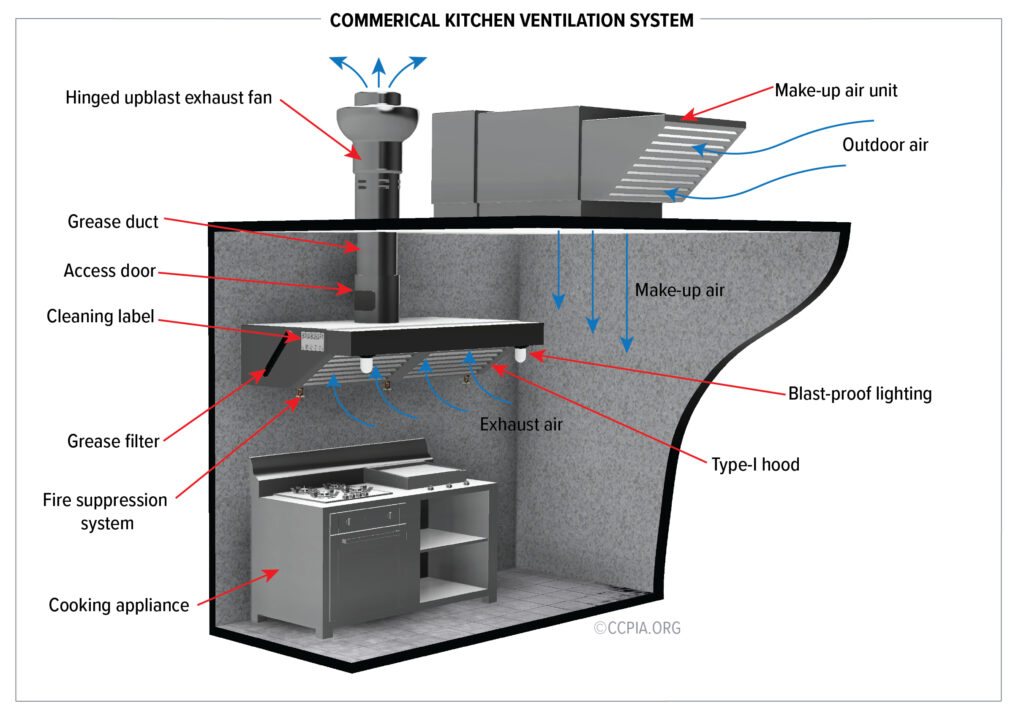
- Seamless Design: Blends seamlessly with cabinetry for a cohesive look.
- Customizable: Can be customized to match your cabinet style and finish.
- Powerful Ventilation: Offers the same performance as traditional range hoods.
Considerations for Integrated Range Hoods:
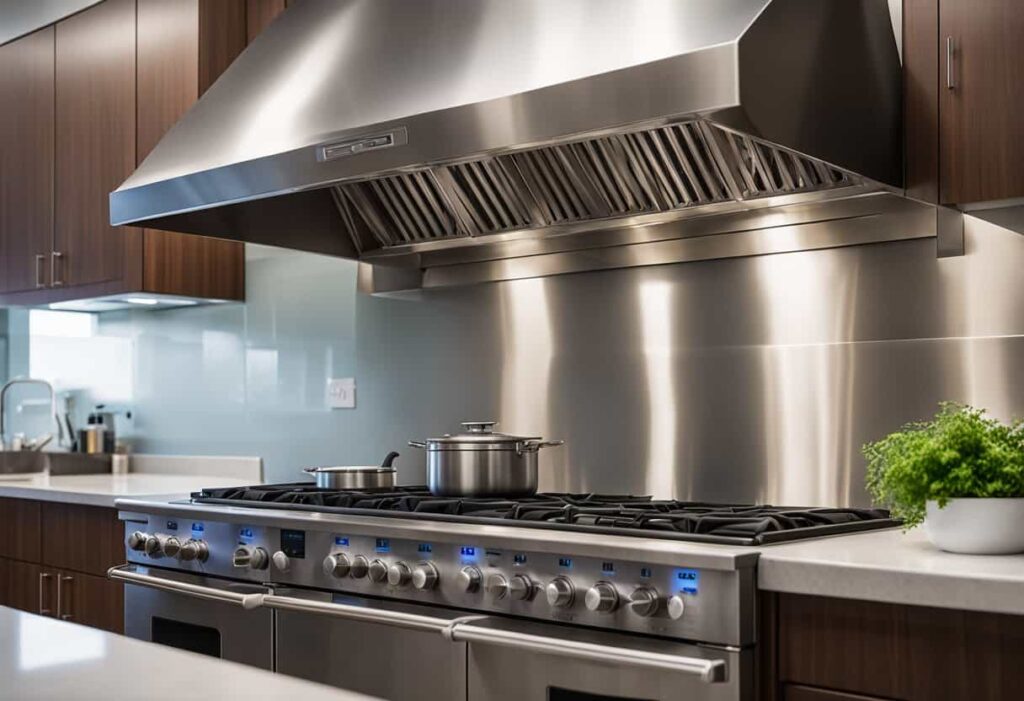
- Cabinetry Modification: Requires modification of the surrounding cabinetry.
- Installation: May require professional installation.
- Cost: Can be more expensive than standard range hoods due to cabinetry modifications.
Ceiling-Mounted Ventilation: Discreet and Powerful
Ceiling-mounted ventilation systems are installed flush with the ceiling, offering a discreet and minimalist solution. They are particularly well-suited for open-concept kitchens or kitchens with high ceilings. These systems typically use powerful fans to draw air upwards and away from the cooking area.
Benefits of Ceiling-Mounted Ventilation:
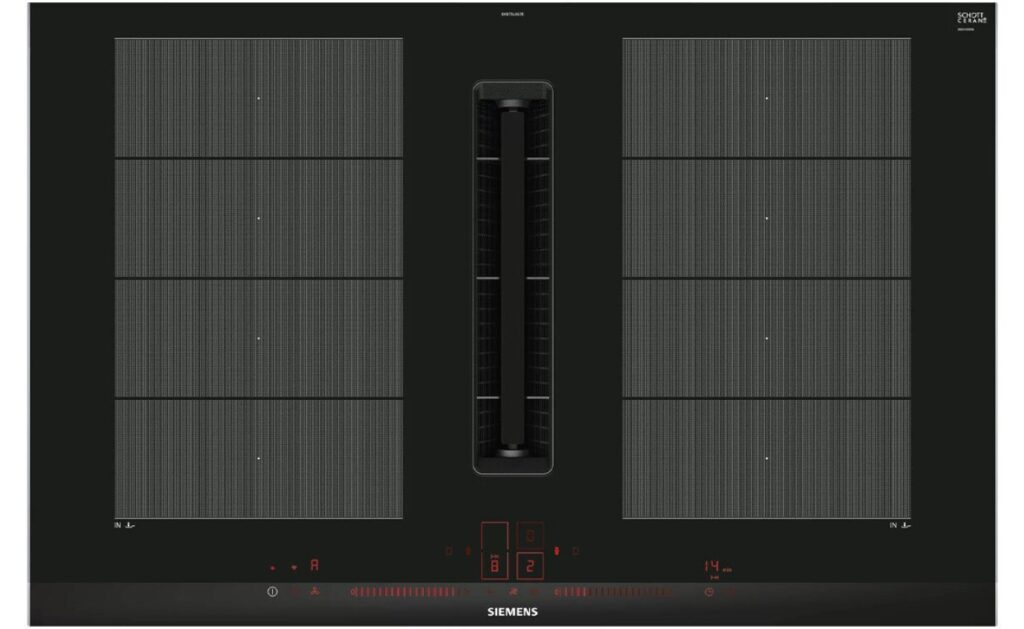
- Discreet Design: Blends seamlessly with the ceiling for a minimalist look.
- Ideal for Open-Concept Kitchens: Provides ventilation without obstructing the view.
- Powerful Ventilation: Can effectively remove smoke and odors from a large area.
Considerations for Ceiling-Mounted Ventilation:
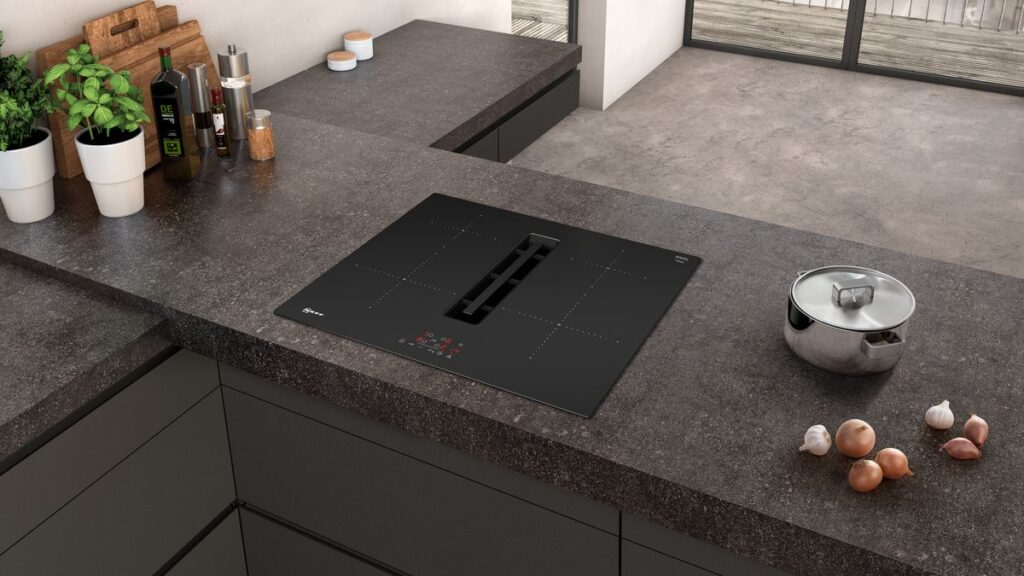
- Installation: Requires professional installation and potentially more complex ductwork.
- Effectiveness: May be less effective for cooktops located far from the ceiling.
- Cost: Can be more expensive than traditional range hoods.
Recirculating Downdraft Ventilation: An Alternative Option
While generally not as effective as ducted systems, recirculating downdraft ventilation offers a solution for those unable to install external ducting. These systems utilize filters (typically charcoal) to clean the air before recirculating it back into the kitchen. While they don’t eliminate moisture or heat, they can help reduce odors and grease.
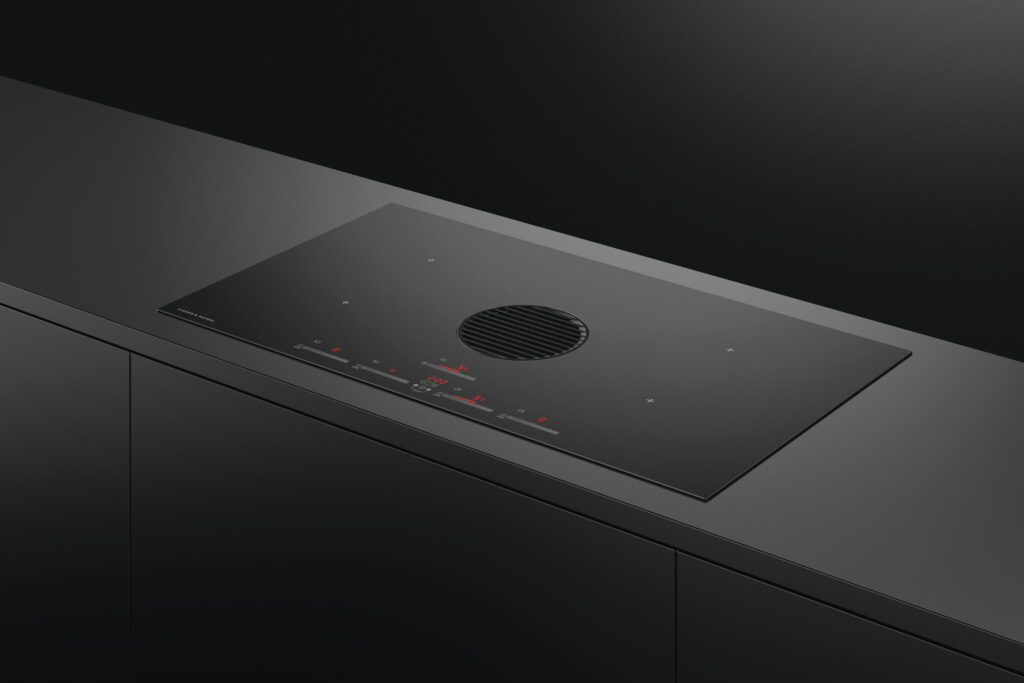
Benefits of Recirculating Downdraft Ventilation:
- No Ductwork Required: Easy to install in existing kitchens without ducting.
- Minimalist Design: Retracts when not in use, maximizing countertop space.
Considerations for Recirculating Downdraft Ventilation:

- Limited Effectiveness: Less effective than ducted systems at removing pollutants.
- Filter Replacement: Requires regular filter replacement to maintain performance.
- Doesn’t Remove Moisture or Heat: Only addresses odors and grease.
Factors to Consider When Choosing an Integrated Ventilation System
Selecting the right integrated ventilation system requires careful consideration of several factors:
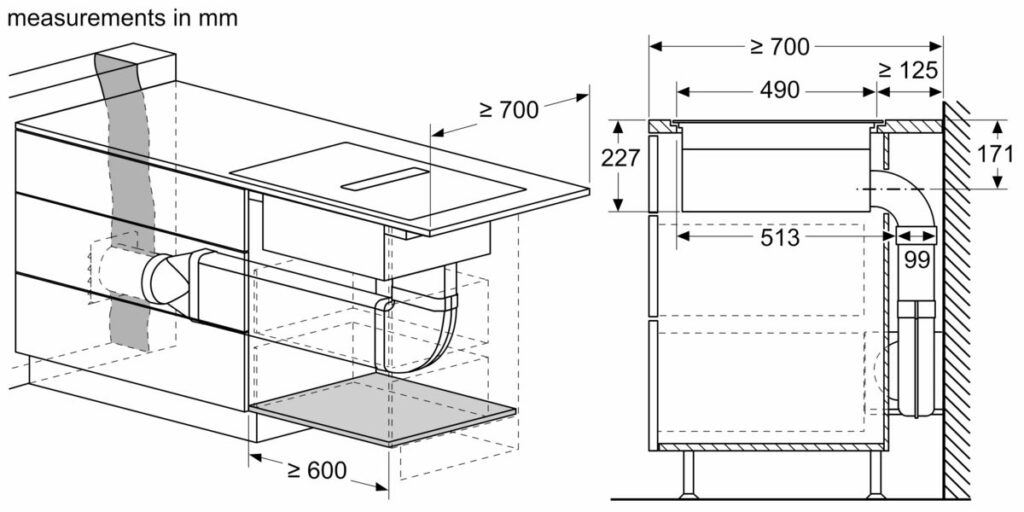
Kitchen Layout and Design
The layout of your kitchen is a crucial factor in determining the type of ventilation system that will work best. Consider the location of your cooktop, the height of your ceilings, and the overall design aesthetic of your kitchen. For island cooktops, downdraft or ceiling-mounted ventilation might be the best options. For kitchens with limited space, an integrated range hood concealed within cabinetry could be ideal.
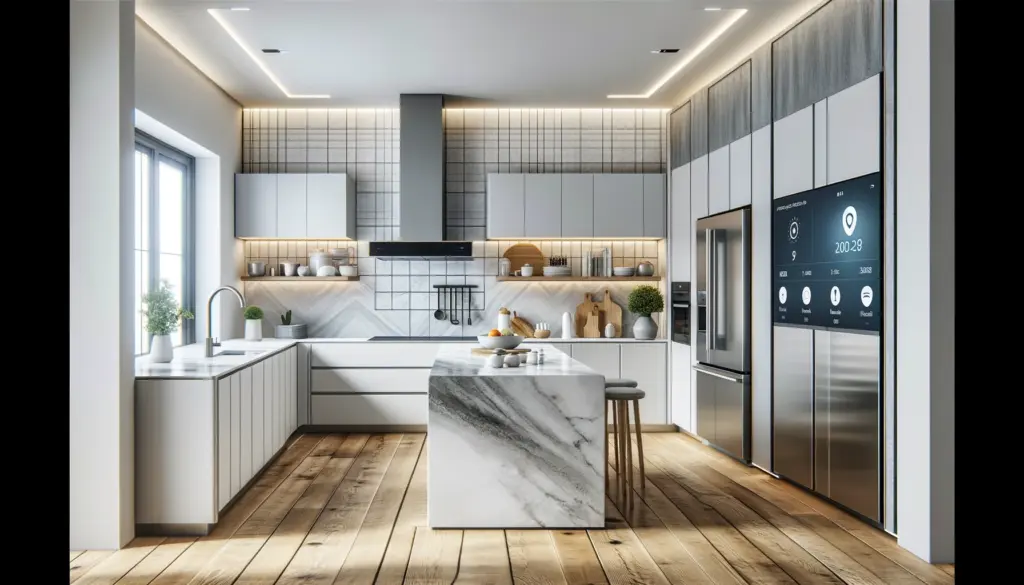
Cooking Style and Frequency
Your cooking habits also play a significant role. If you frequently cook with high heat, create a lot of smoke, or use strong-smelling ingredients, you’ll need a more powerful ventilation system. Consider the CFM (cubic feet per minute) rating of the system, which indicates the volume of air it can move per minute. A higher CFM rating is generally better for heavy cooking.
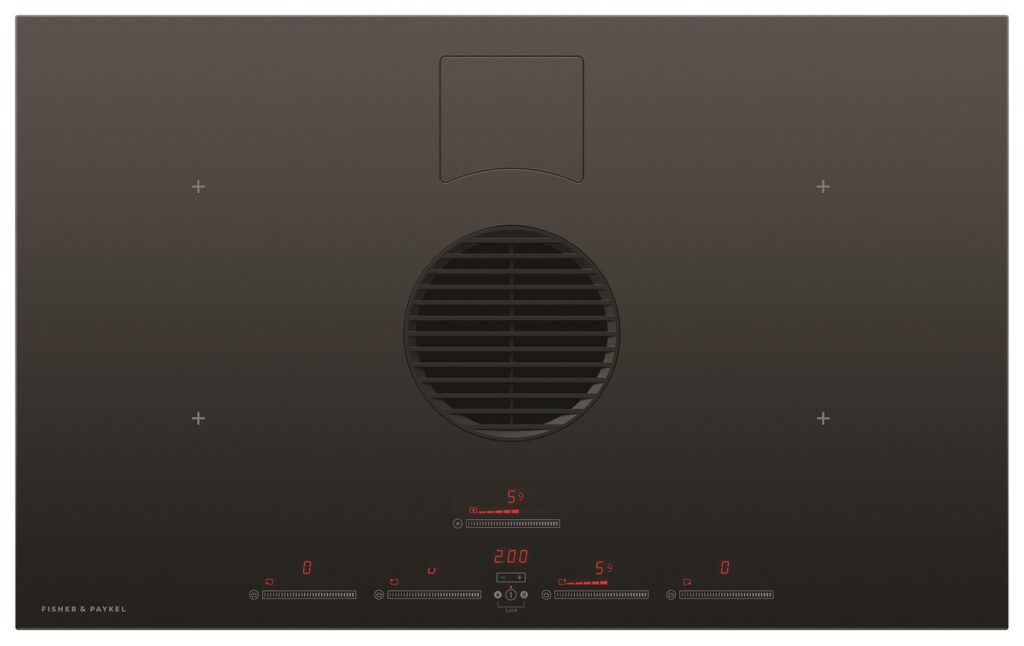
Ductwork Feasibility
Determine whether you can install ductwork to vent the air outside. Ducted systems are generally more effective, but they require access to an exterior wall or roof. If ductwork is not feasible, a ductless system might be your only option, but be aware of its limitations.
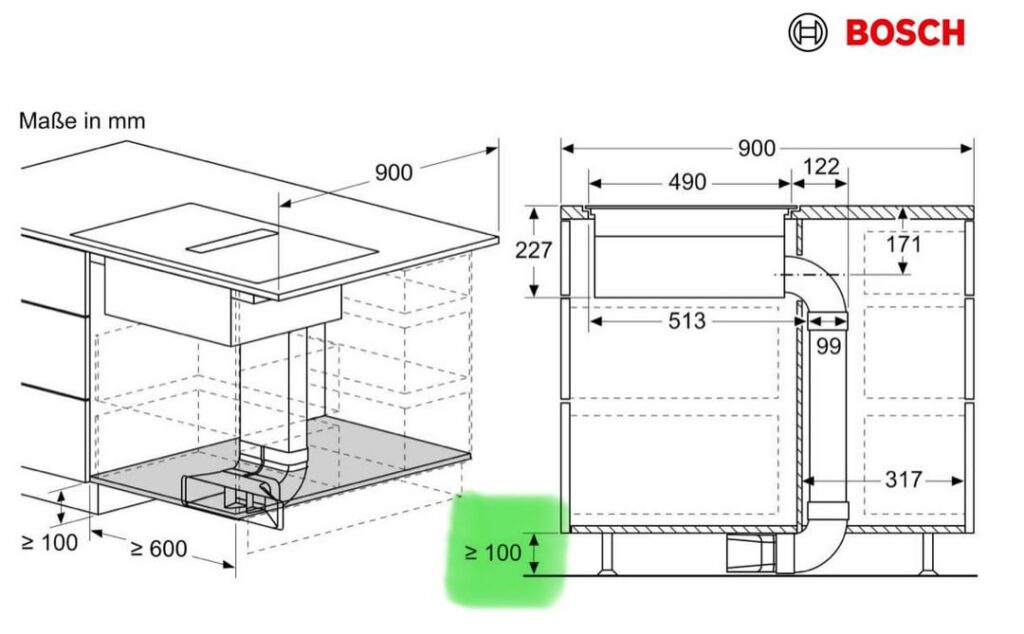
Noise Level
The noise level of the ventilation system is another important consideration. Look for systems with variable fan speeds, allowing you to adjust the power and noise level as needed. Some systems also offer noise reduction technology for quieter operation.
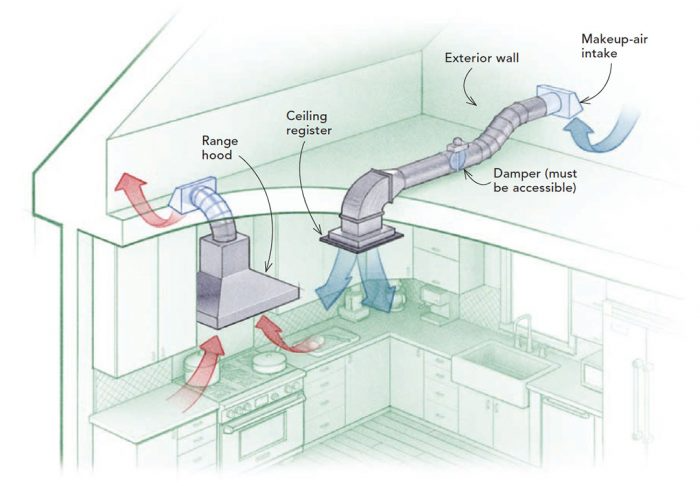
Budget
Integrated ventilation systems can range in price from a few hundred dollars to several thousand dollars. Set a budget and research different options within your price range. Remember that you may also need to factor in the cost of installation and any necessary cabinetry modifications.
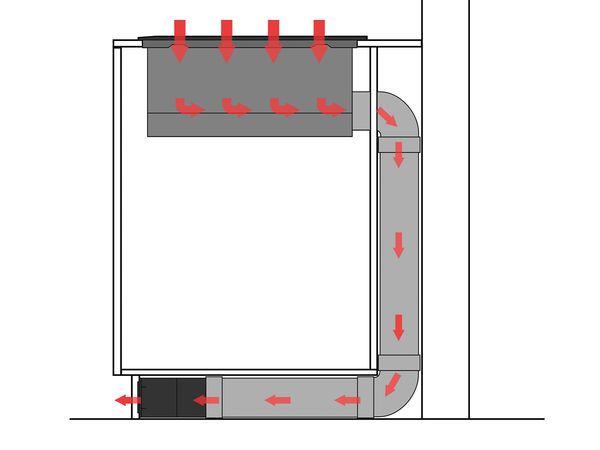
Maintenance Requirements
Consider the maintenance requirements of the system. How often will you need to clean the filters? Are replacement parts readily available? Choose a system that is easy to maintain and has readily available replacement parts.
Installation and Maintenance Tips for Integrated Ventilation Systems
Proper installation and maintenance are essential for ensuring the optimal performance and longevity of your integrated ventilation system.
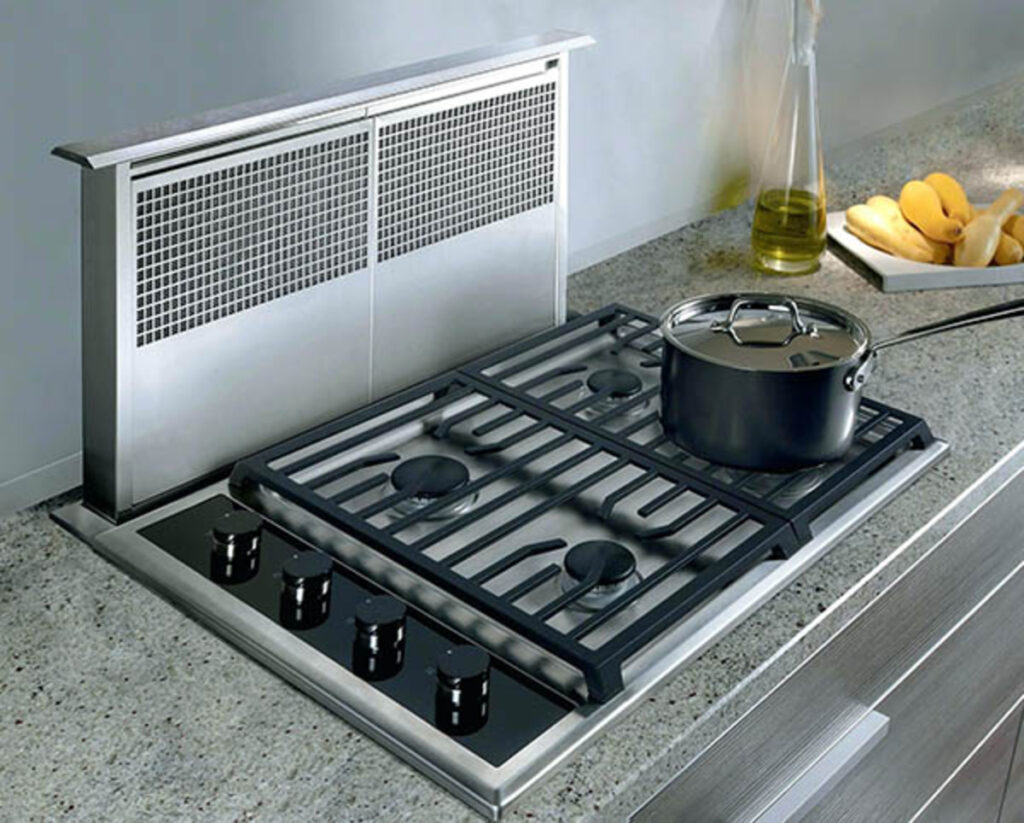
Professional Installation is Recommended
While some ventilation systems can be installed DIY, it’s generally recommended to hire a professional installer. A professional can ensure that the system is properly installed, ducted correctly, and meets all local building codes. This is especially important for ducted systems, which require careful planning and execution to ensure efficient airflow.
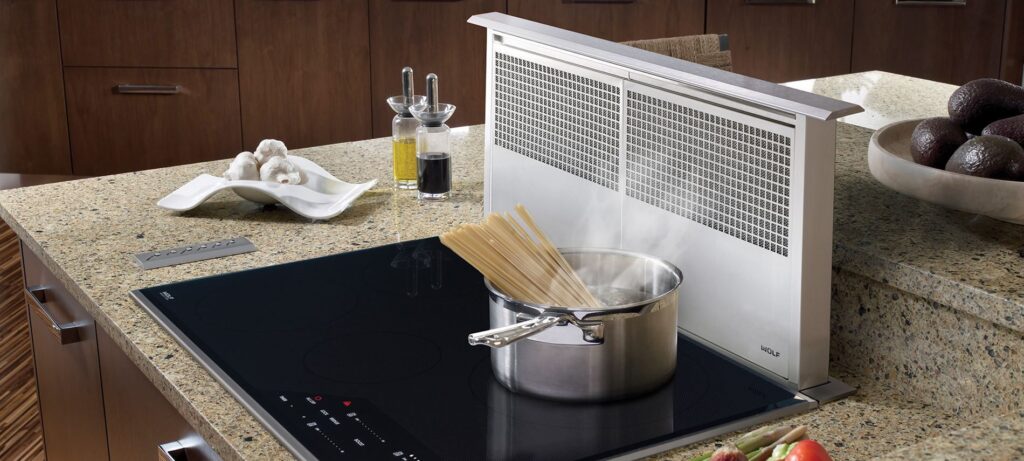
Regular Cleaning of Filters
The filters are the heart of your ventilation system, trapping grease, smoke, and odors. Clean the filters regularly, typically every one to three months, depending on your cooking frequency. Most filters can be washed in the dishwasher or by hand with warm soapy water. Ductless systems require more frequent filter changes, typically every three to six months.
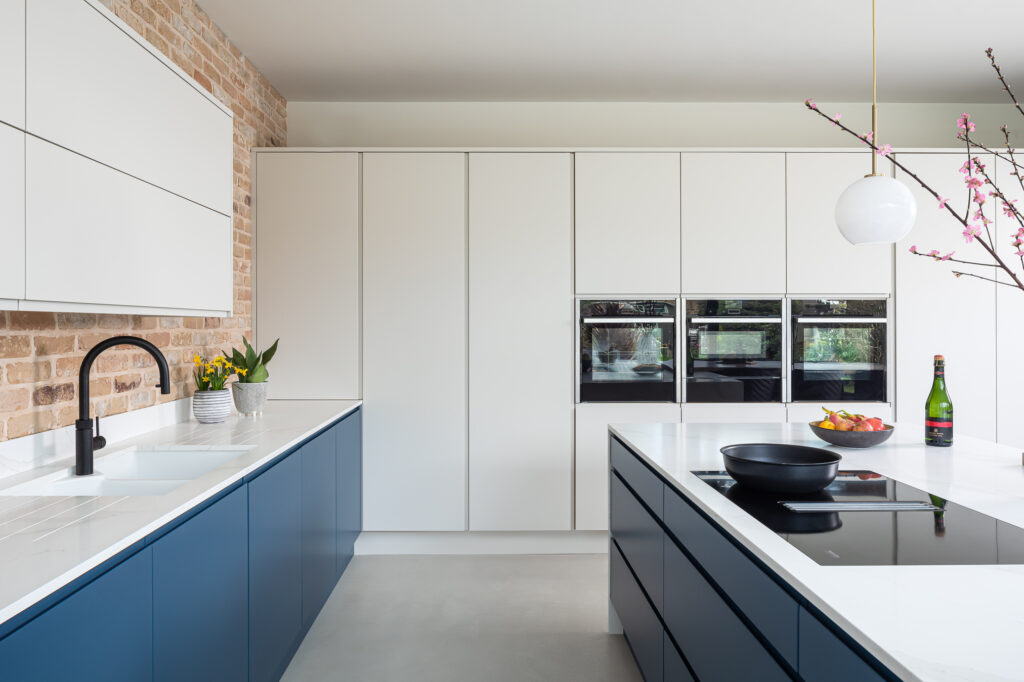
Wipe Down Exterior Surfaces
Regularly wipe down the exterior surfaces of the ventilation system to remove grease and grime. Use a mild detergent and a soft cloth to avoid scratching the finish. For stainless steel surfaces, use a stainless steel cleaner to maintain its shine.
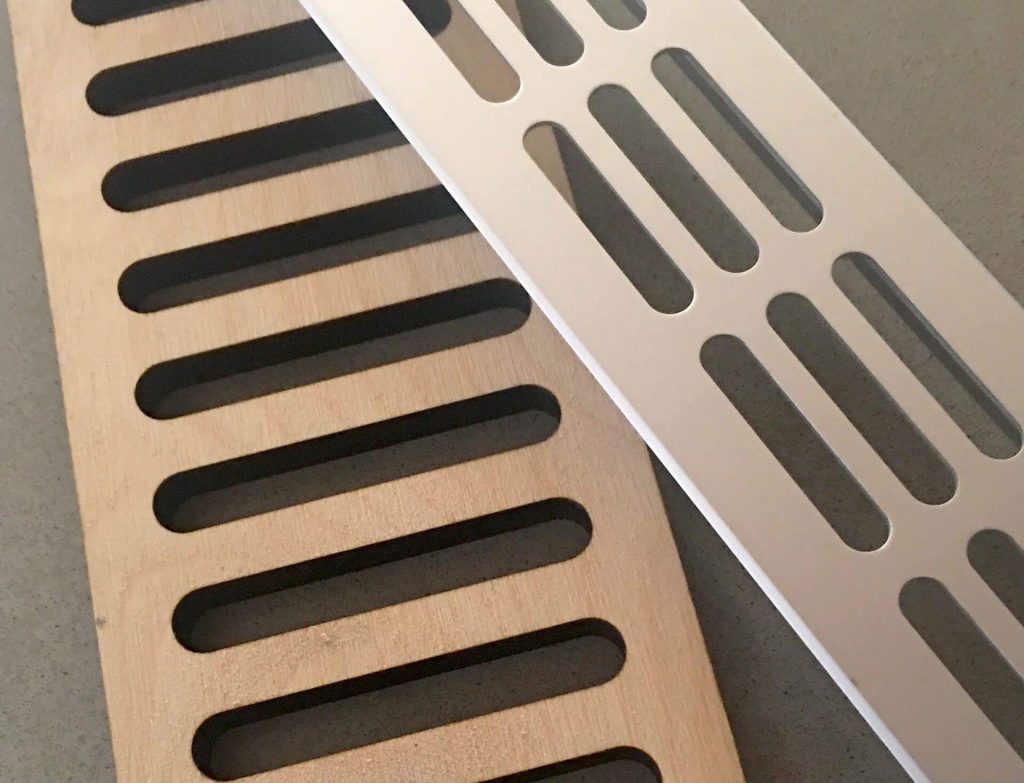
Inspect Ductwork (for Ducted Systems)
Periodically inspect the ductwork for any leaks or blockages. Leaks can reduce the efficiency of the system, while blockages can restrict airflow. If you notice any problems, consult with a professional to have them repaired.
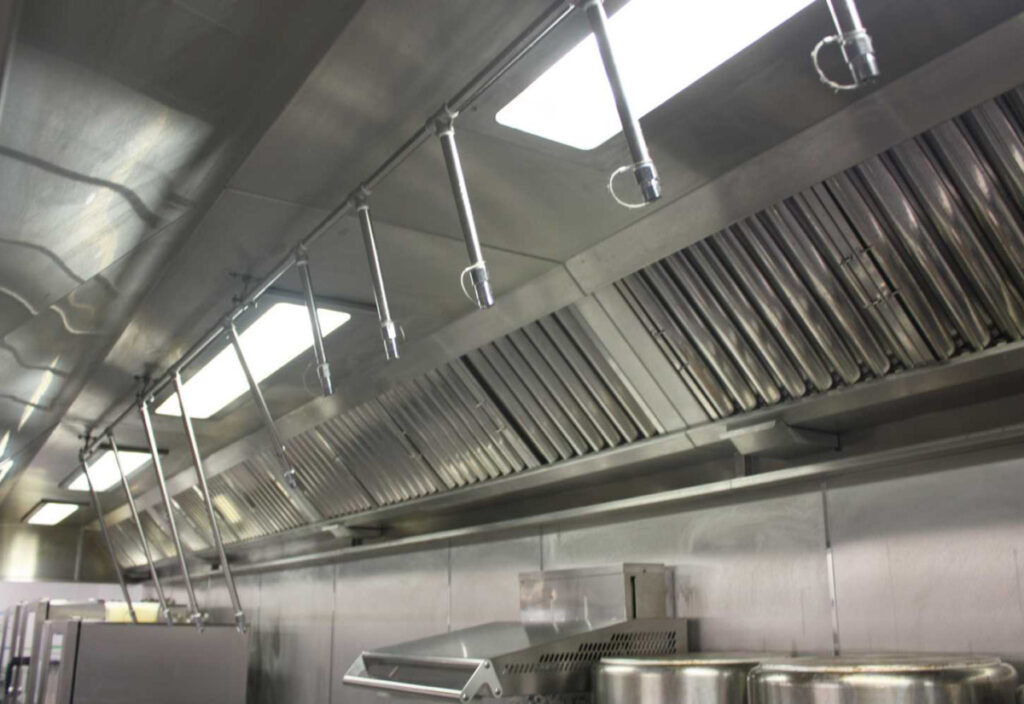
Consider Smart Features
Many modern integrated ventilation systems come equipped with smart features that enhance their functionality and convenience. These features can include:
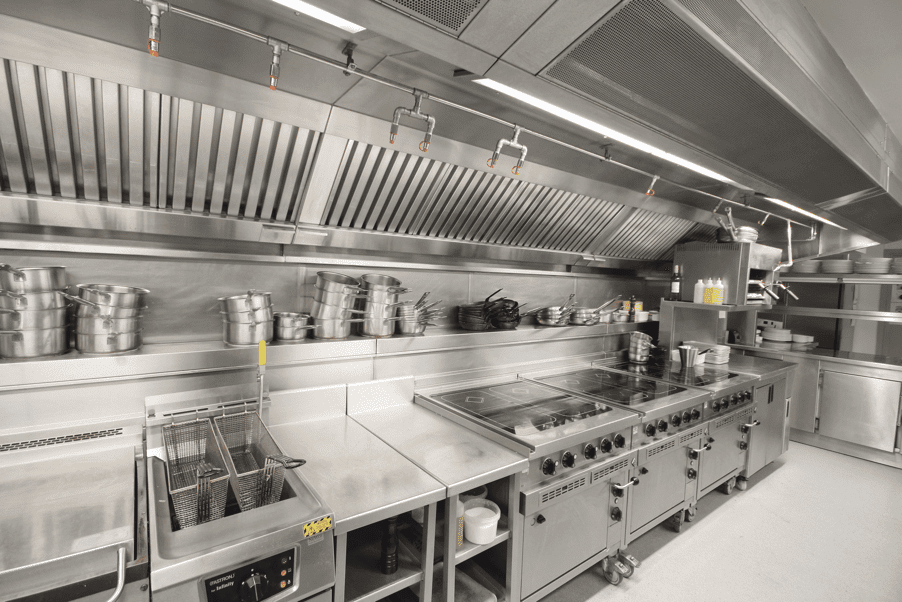
- Automatic Operation: The system automatically turns on when it detects cooking activity.
- Variable Fan Speeds: Adjust the fan speed based on the level of cooking activity.
- Remote Control: Control the system from a remote or smartphone app.
- Filter Replacement Reminders: Receive alerts when it’s time to replace the filters.
The Future of Kitchen Ventilation: What’s on the Horizon?
The world of kitchen ventilation is constantly evolving, with new technologies and innovations emerging all the time. Here are some trends to watch for in the future:
- Improved Filtration Technology: Expect to see more advanced filtration systems that are even more effective at removing pollutants. This could include new types of filters or advanced air purification technologies.
- Smarter Systems: Integration with smart home systems will become even more seamless, allowing you to control your ventilation system with your voice or smartphone. AI could play a role in automatically adjusting fan speeds based on cooking activity and air quality.
- More Sustainable Solutions: Manufacturers are increasingly focused on developing more sustainable ventilation systems that use less energy and are made from recycled materials.
- Personalized Ventilation: Imagine systems that can be customized to your specific cooking needs and preferences, automatically adjusting the airflow and filtration based on the ingredients you’re using.
Beyond Ventilation: Creating a Holistic Kitchen Environment
While integrated ventilation is a crucial component of a healthy and enjoyable kitchen, it’s important to consider other factors that contribute to a holistic kitchen environment:
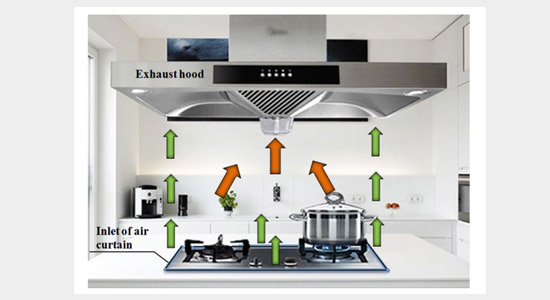
- Proper Lighting: Good lighting is essential for safe and efficient cooking. Consider task lighting for countertops and under-cabinet lighting to illuminate your workspace.
- Ergonomic Design: Design your kitchen to be comfortable and ergonomic, minimizing strain and fatigue. Consider the height of your countertops and the placement of appliances.
- Air Quality: In addition to ventilation, consider other measures to improve air quality, such as using natural cleaning products and avoiding the use of harsh chemicals.
- Acoustics: A noisy kitchen can be stressful and unpleasant. Consider using sound-absorbing materials to reduce noise levels.
Conclusion: Investing in Your Kitchen’s Future
Integrated kitchen ventilation systems represent a significant investment in your home and your well-being. By choosing the right system and maintaining it properly, you can create a cleaner, healthier, and more enjoyable cooking environment for years to come.
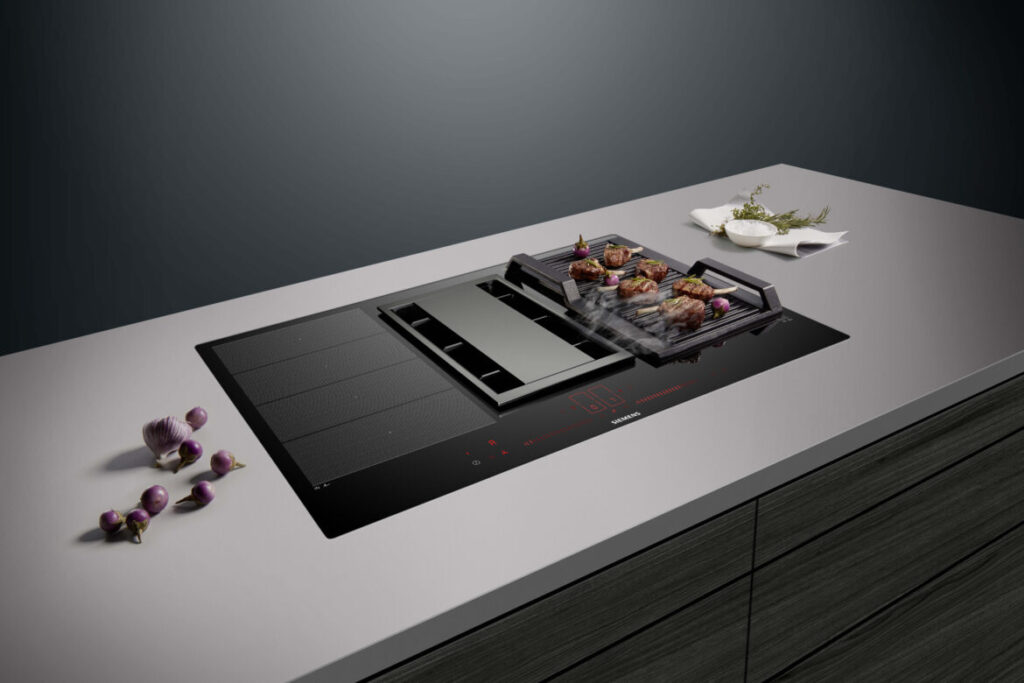
From sleek downdraft systems that disappear when not in use to powerful integrated range hoods that blend seamlessly with your cabinetry, there’s an integrated ventilation solution for every kitchen and every cooking style. So, breathe easy, cook happy, and embrace the future of kitchen ventilation!
Ultimately, the perfect integrated ventilation system will depend on your individual needs and preferences. By carefully considering the factors outlined in this guide, you can make an informed decision and create a kitchen that is both functional and beautiful.
Don’t underestimate the impact of good ventilation. It’s not just about removing odors; it’s about creating a healthier home, protecting your investment, and enhancing your overall cooking experience. So, take the time to research your options, choose wisely, and enjoy the benefits of a well-ventilated kitchen!
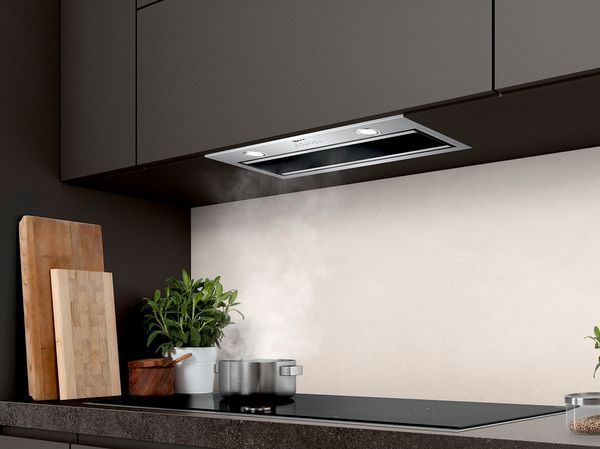
 Nimila
Nimila
